
Roots
The very idea of tending to our hair, to the delicate strands that spring from our scalps, carries an echo from distant times. It speaks of something deeply human, a quiet practice passed down through generations, long before bottles lined shelves or laboratories deciphered molecular secrets. Consider the way light falls on a single strand, how it moves with a gentle breeze, or the simple comfort of a well-cared-for crown.
This fundamental connection, the almost intuitive understanding of what our hair needs to thrive, is where the wisdom of ancient civilizations truly meets the demands of modern scalp health. It is a dialogue between old ways and new insights, revealing that the roots of vibrant hair extend far beyond the visible.
Across diverse cultures, the scalp was not merely a surface for hair to grow upon; it was recognized as a living ground, a vital part of overall well-being. Ancient healers, from the Ayurvedic practitioners of India to the traditional medicine keepers of China and Africa, understood that healthy hair originated from a nourished scalp. They observed, experimented, and refined methods using readily available botanicals and practices, intuitively grasping principles that contemporary science now meticulously validates.
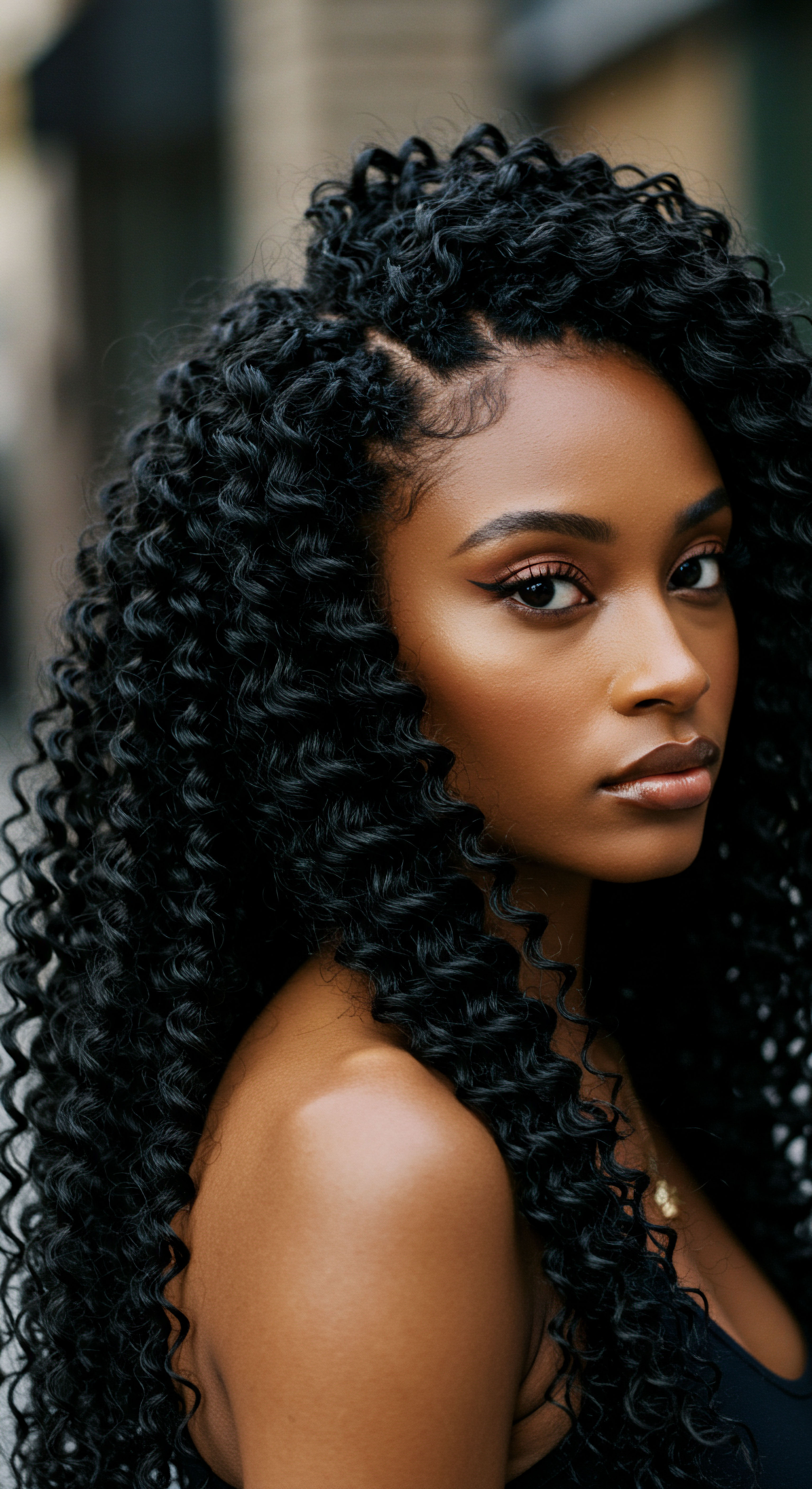
Ancient Understandings of Scalp Vitality
In many ancient societies, hair was considered a powerful symbol of identity, status, and vitality. The care given to it transcended mere aesthetics, becoming a ritualistic act of self-preservation and cultural expression. This holistic view meant that scalp care was inextricably linked to the body’s internal balance and the external environment. They saw the scalp as a garden, requiring the right soil, moisture, and gentle tending for its flora to truly flourish.
For instance, the ancient Egyptians, renowned for their sophisticated beauty regimens, regularly employed natural oils like Castor Oil and Olive Oil not only to condition their hair but also to cleanse the scalp. This practice, often involving massaging the oils into the scalp and then using fine-toothed combs to distribute the oil and remove impurities, regulated oil production and removed buildup while preserving the scalp’s moisture barrier. Modern trichology now affirms this principle ❉ oils can effectively dissolve excess sebum and environmental pollutants, upholding the scalp’s crucial acid mantle. This protective, slightly acidic film guards against unwelcome microbial overgrowth.
Ancient wisdom consistently pointed to the scalp as the fundamental starting point for healthy hair, a concept modern science enthusiastically affirms.

What Constitutes a Healthy Scalp?
Today, we speak of a “healthy scalp” in terms of its microbiome, pH balance, and the integrity of its skin barrier. These scientific terms, while new, describe conditions that ancient practices aimed to achieve. A balanced scalp microbiome, a community of bacteria and fungi, protects against pathogens and regulates inflammation, directly supporting hair follicles. Disruptions to this delicate balance can lead to irritation, flaking, and even hair thinning.
Traditional practices, through their consistent use of certain ingredients and methods, inadvertently contributed to this balance. For example, fermented ingredients, common in ancient Asian hair care, introduce beneficial compounds that can help regulate scalp pH and strengthen the hair cuticle. This is a profound connection ❉ the intuitive wisdom of centuries past laying the groundwork for what our most advanced scientific tools now confirm.
| Ancient Ingredient Coconut Oil |
| Traditional Application Pre-shampoo treatment, deep conditioning, dandruff control in Ayurvedic practice |
| Modern Scientific Validation Lauric acid content reduces protein loss and prevents hair damage. Penetrates hair shaft effectively. |
| Ancient Ingredient Olive Oil |
| Traditional Application Cleansing, conditioning, moisturizing in Mediterranean cultures |
| Modern Scientific Validation Rich in antioxidants, vitamins E and K, fatty acids; moisturizes scalp, prevents dandruff, promotes shine. |
| Ancient Ingredient Castor Oil |
| Traditional Application Hair growth promotion, soothing skin ailments in ancient Egypt and Traditional Chinese Medicine |
| Modern Scientific Validation Ricinoleic acid offers anti-inflammatory and antimicrobial properties; may boost circulation and hair growth. |
| Ancient Ingredient Fermented Rice Water |
| Traditional Application Hair rinse for strength and growth by Yao tribe in China |
| Modern Scientific Validation Increases bioavailability of nutrients, balances scalp pH, strengthens hair cuticle through organic acids. |
| Ancient Ingredient This table highlights how historical ingredients, long revered for their hair benefits, now find scientific backing in their effects on scalp health. |
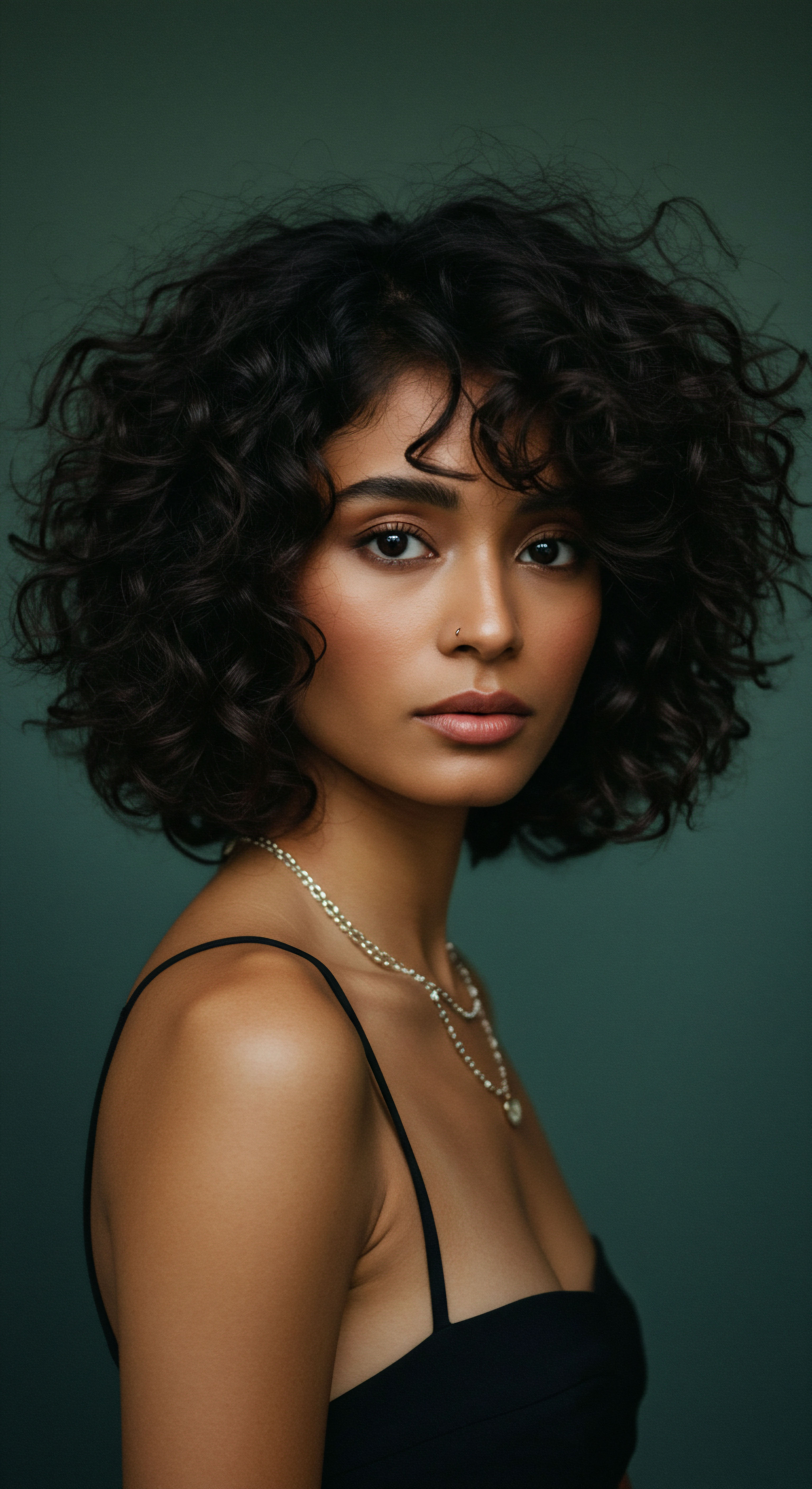
The Role of Traditional Botanicals
The selection of botanicals in ancient hair care was often based on generations of observation and practical experience. Plants like Amla (Indian gooseberry), Shikakai, and Neem were not simply cleansers but were understood to nourish the scalp and hair holistically. Amla, for instance, has been used as a hair tonic to enrich hair growth and pigmentation, and modern research confirms its antioxidant properties and ability to strengthen hair.
This deep knowledge of plant properties, gained through empirical use, allowed ancient cultures to create formulations that addressed various scalp concerns. They understood that certain herbs could soothe irritation, others could cleanse without stripping, and still others could provide nourishment. This botanical wisdom forms a foundational layer for today’s cosmetic chemistry, guiding the selection of natural extracts for modern scalp care products.
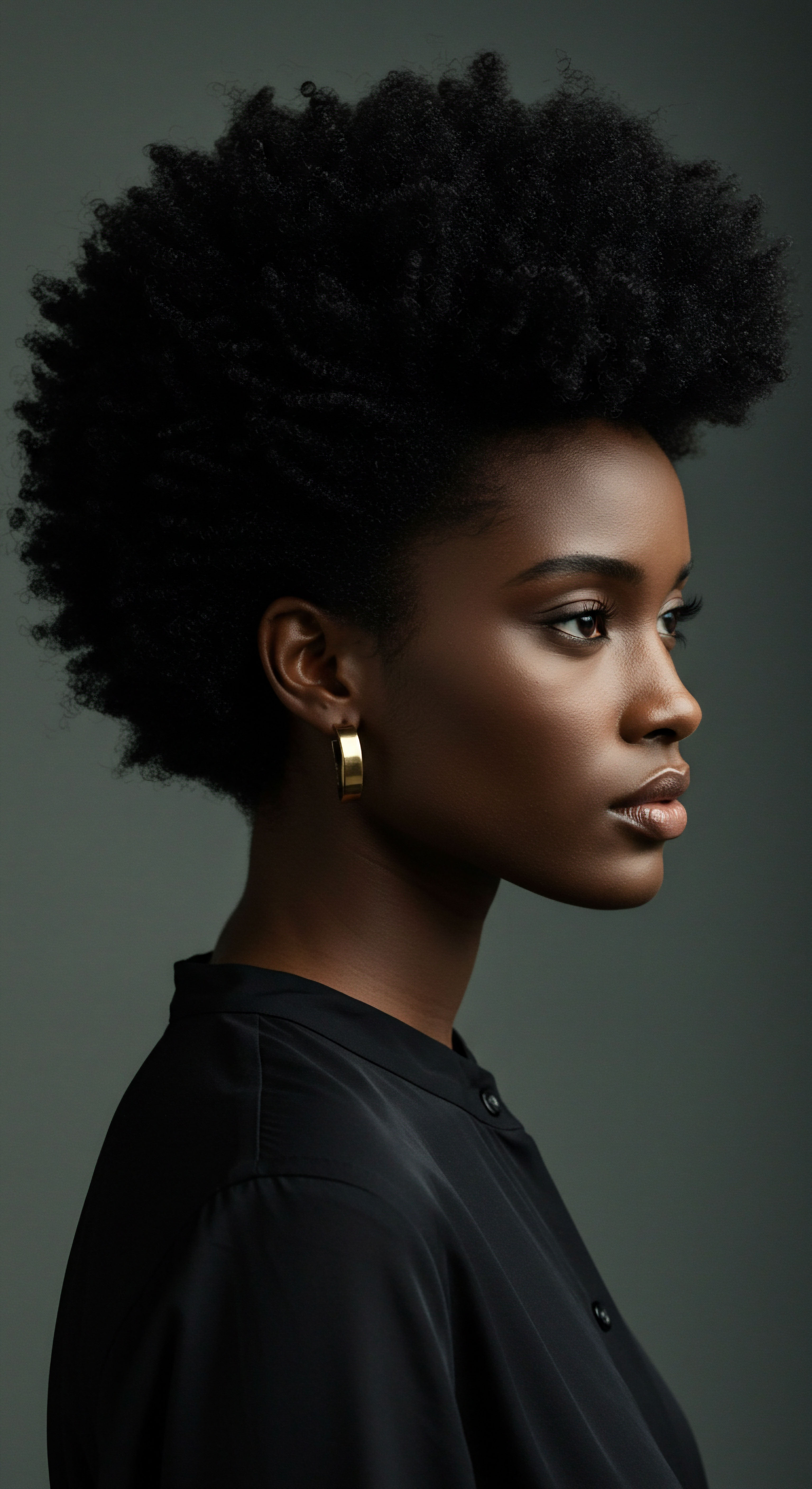
Ritual
Stepping from the foundational wisdom of the scalp into the realm of daily practice, we begin to see how ancient hair care was less about fleeting trends and more about consistent, mindful ritual. It speaks to a profound connection with the body and nature, where actions were deliberate, repetitive, and imbued with purpose. For anyone seeking vibrant hair today, the resonance of these age-old practices offers a compelling path, reminding us that true well-being for our strands arises from attentive, regular care. It is in the gentle application, the rhythmic motion, and the patient waiting that the transformation truly begins.
Ancient hair care was characterized by practices that were often slow, hands-on, and deeply integrated into daily or weekly routines. These were not quick fixes but sustained efforts aimed at long-term scalp and hair vitality. The deliberate nature of these rituals allowed for a deeper connection with one’s hair, fostering an understanding of its unique needs through observation and touch.

What Daily Habits Promoted Scalp Wellness in Antiquity?
Across vastly different cultures, from Ayurvedic traditions in India to indigenous practices in the Americas, regular Scalp Massage stood as a cornerstone of hair care. These were not merely luxurious indulgences but targeted actions designed to enhance hair growth and overall health. Traditional Ayurvedic head massage, known as ‘champi’, often involved vigorous scalp manipulation using specific oils chosen for individual hair types. Similarly, many Native American traditions incorporated regular scalp stimulation using specialized wooden or bone combs.
Modern science has since provided a compelling explanation for these benefits. Scalp massage demonstrably improves blood circulation to the hair follicles, delivering essential oxygen and nutrients vital for robust hair growth. A 2016 study published in Eplasty showed that standardized scalp massage led to increased hair thickness in nine male participants after just 24 weeks of daily 4-minute sessions.
Further, a study involving 340 individuals with androgenetic alopecia reported that 69% experienced improved hair regrowth after performing two 20-minute scalp massages daily for at least six months. This mechanical stimulation is thought to activate dermal papilla cells, which are key players in the hair growth cycle.
The rhythmic, intentional practice of scalp massage, a cornerstone of ancient hair rituals, finds its modern validation in studies demonstrating increased blood flow and hair thickness.
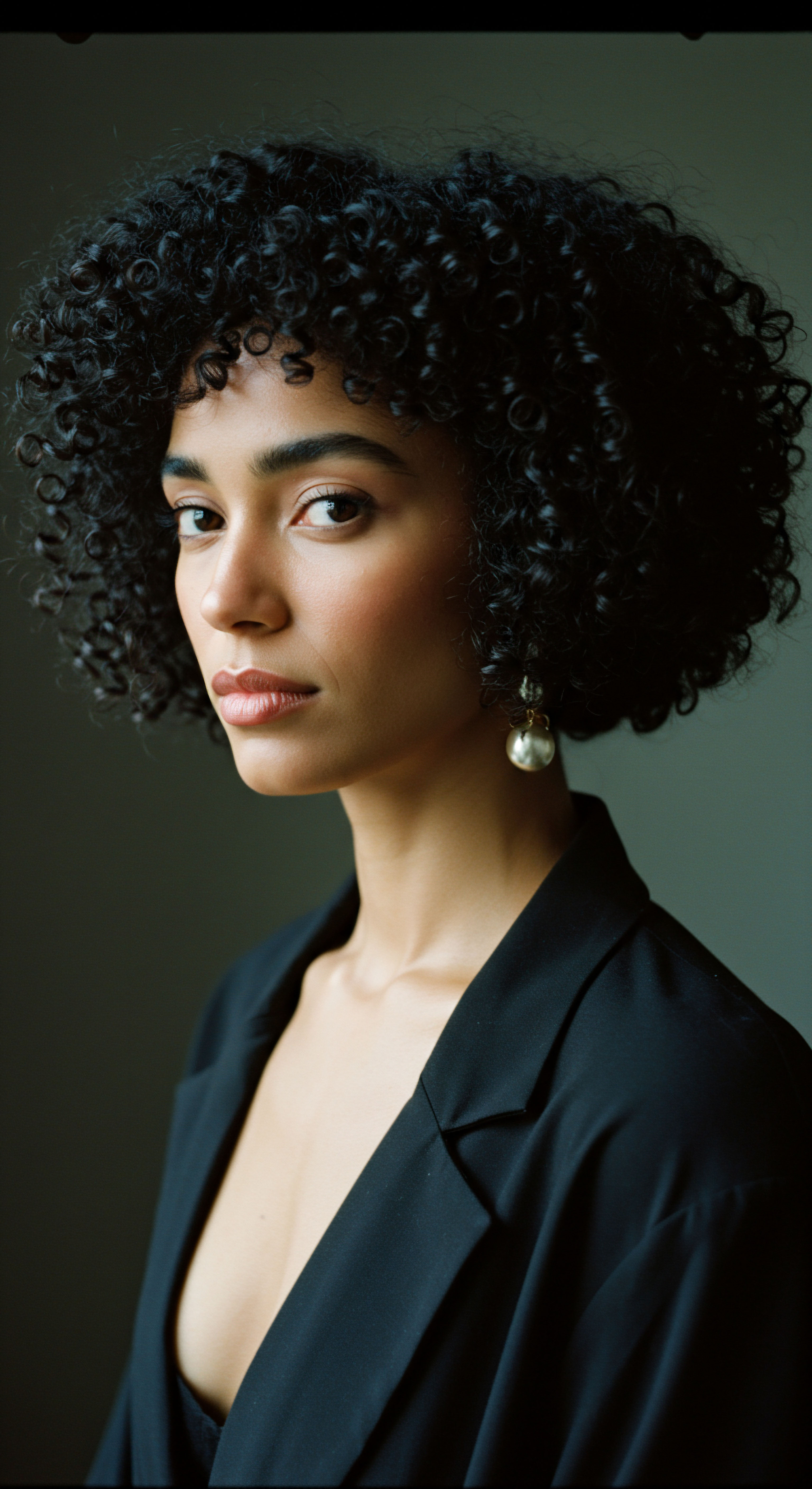
Protective Styling ❉ A Timeless Practice
Another significant aspect of ancient hair wisdom, particularly relevant for textured hair, was the widespread use of Protective Styles. Styles like braids, twists, and various forms of updos were not just fashionable; they served a crucial purpose in shielding hair from environmental damage, reducing manipulation, and minimizing breakage. This approach allowed hair to retain length and maintain its structural integrity over time.
For communities with highly textured hair, where strands are more susceptible to breakage due to their unique coil patterns and dryness, protective styling was a practical necessity. It minimized the daily stress of combing and styling, preserving the delicate hair shaft. This ancient strategy remains a vital component of modern textured hair care, advocating for periods of minimal manipulation to promote length retention and health.
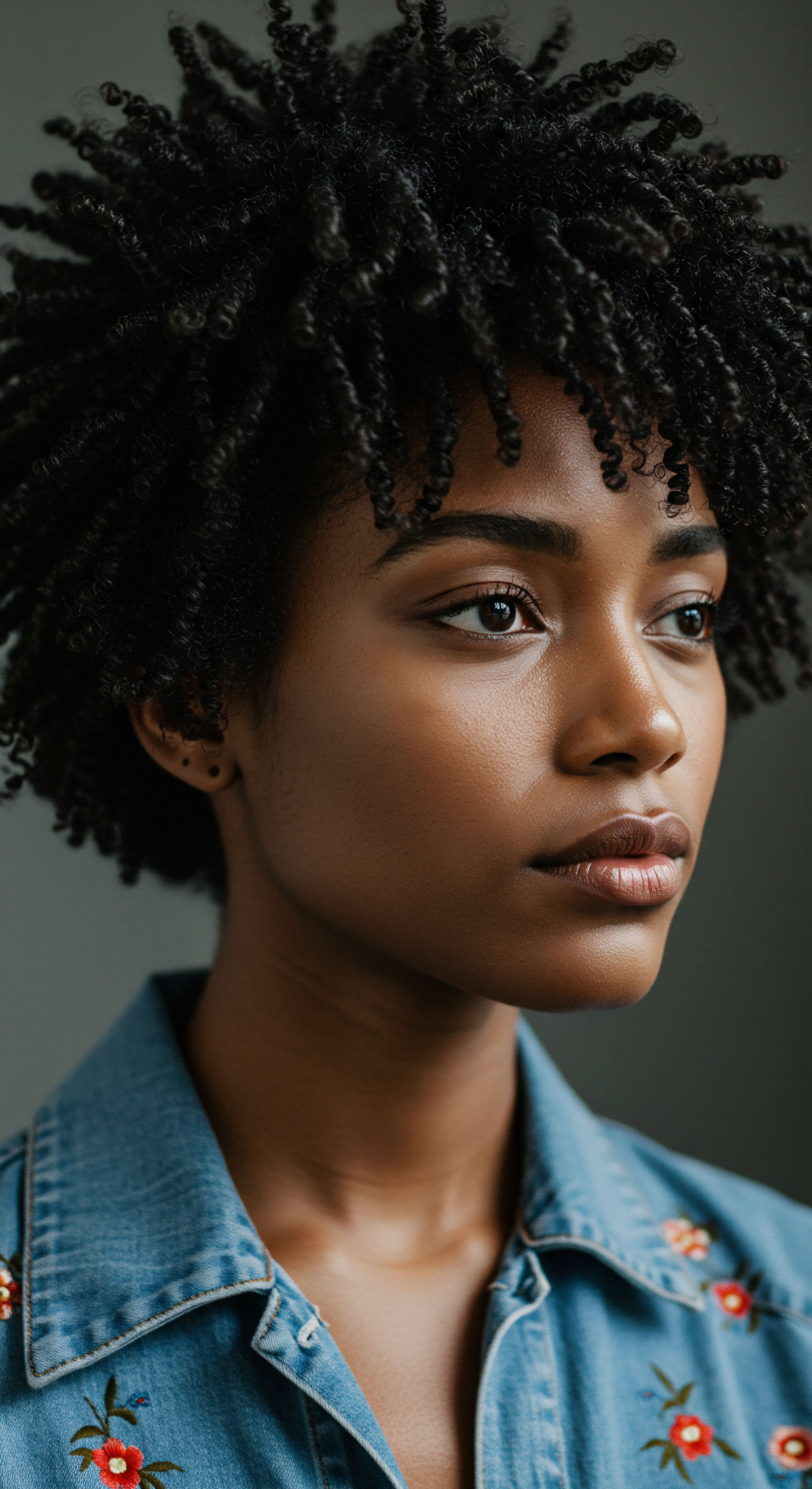
The Role of Natural Cleansers and Conditioners
Long before the advent of commercial shampoos, ancient cultures relied on natural substances for cleansing and conditioning. These often included saponin-rich plants, clays, and fermented liquids. For example, the use of Fermented Rice Water by the Yao tribe in China for centuries is a prime illustration. This simple yet powerful concoction, created by leaving rice water to ferment, develops increased concentrations of antioxidants, vitamins, and minerals.
It also creates organic acids that help balance scalp pH and strengthen the hair cuticle. This traditional practice, now gaining global recognition, showcases how a seemingly humble ingredient can offer profound benefits for scalp and hair vitality.
Similarly, the use of certain clays and muds for scalp detoxification and conditioning was common in various regions. These natural materials could absorb excess oil and impurities without stripping the scalp’s natural moisture, maintaining its delicate balance. The gentle, nourishing nature of these ancient cleansers stands in contrast to some harsh modern detergents, which can disrupt the scalp’s natural oils and microbiome.
- Scalp Massage ❉ Regularly applying gentle pressure to the scalp with fingertips or specialized tools to stimulate blood flow and hair follicles.
- Protective Styles ❉ Adopting hairstyles that minimize manipulation and exposure to environmental stressors, such as braids, twists, and updos.
- Natural Cleansers ❉ Utilizing plant-based materials like saponin-rich herbs or fermented liquids to cleanse the scalp gently without stripping natural oils.

Relay
To truly grasp the profound continuity between ancient hair care wisdom and modern scalp health practices, we must move beyond simple observation and consider the intricate scientific and cultural dialogues that span millennia. This deeper examination reveals not merely a correlation, but a compelling relay of knowledge, where empirical insights from the past are now being decoded and amplified by contemporary research. It prompts us to consider the less apparent complexities, the interplay of biological, psychological, and cultural factors that have always shaped our relationship with our hair.
The journey from traditional practices to modern scientific understanding is not a linear progression that dismisses the old for the new. Rather, it is a circular conversation, where modern scientific inquiry often finds itself validating, and sometimes even re-discovering, principles long understood by ancestral communities. This is particularly evident when examining the complex ecosystem of the scalp and its connection to overall physiological well-being.

Can Scalp Health Indicate Broader Wellness?
A fascinating connection arises when we consider the relationship between scalp conditions and systemic health. Traditional medicine systems, such as Ayurveda and Traditional Chinese Medicine, often viewed hair and scalp health as indicators of internal balance. They understood that imbalances within the body could manifest as scalp issues. Modern research is beginning to echo this sentiment, revealing unexpected correlations.
One compelling, if somewhat controversial, data point highlights this connection ❉ ethnobotanical studies on plants traditionally used for Androgenetic Alopecia (pattern baldness) reveal a significant overlap with plants used for diabetes treatment. A review of literature indicated that 44% of traditional plants specifically applied for androgenetic alopecia also have ethnobotanical records for diabetes treatment. While traditional therapies for hair were often applied topically, and those for diabetes taken orally, this correlation suggests a conceptualization of hair loss treatments as a form of Topical Nutrition that improves glucose metabolism locally in the scalp tissue. This challenges the conventional view of hair loss as solely a cosmetic or genetic issue, suggesting a deeper metabolic link that ancient healers might have intuitively recognized.
The historical link between traditional hair loss remedies and diabetes treatments suggests a deeper, systemic connection to scalp health that modern science is just beginning to understand.
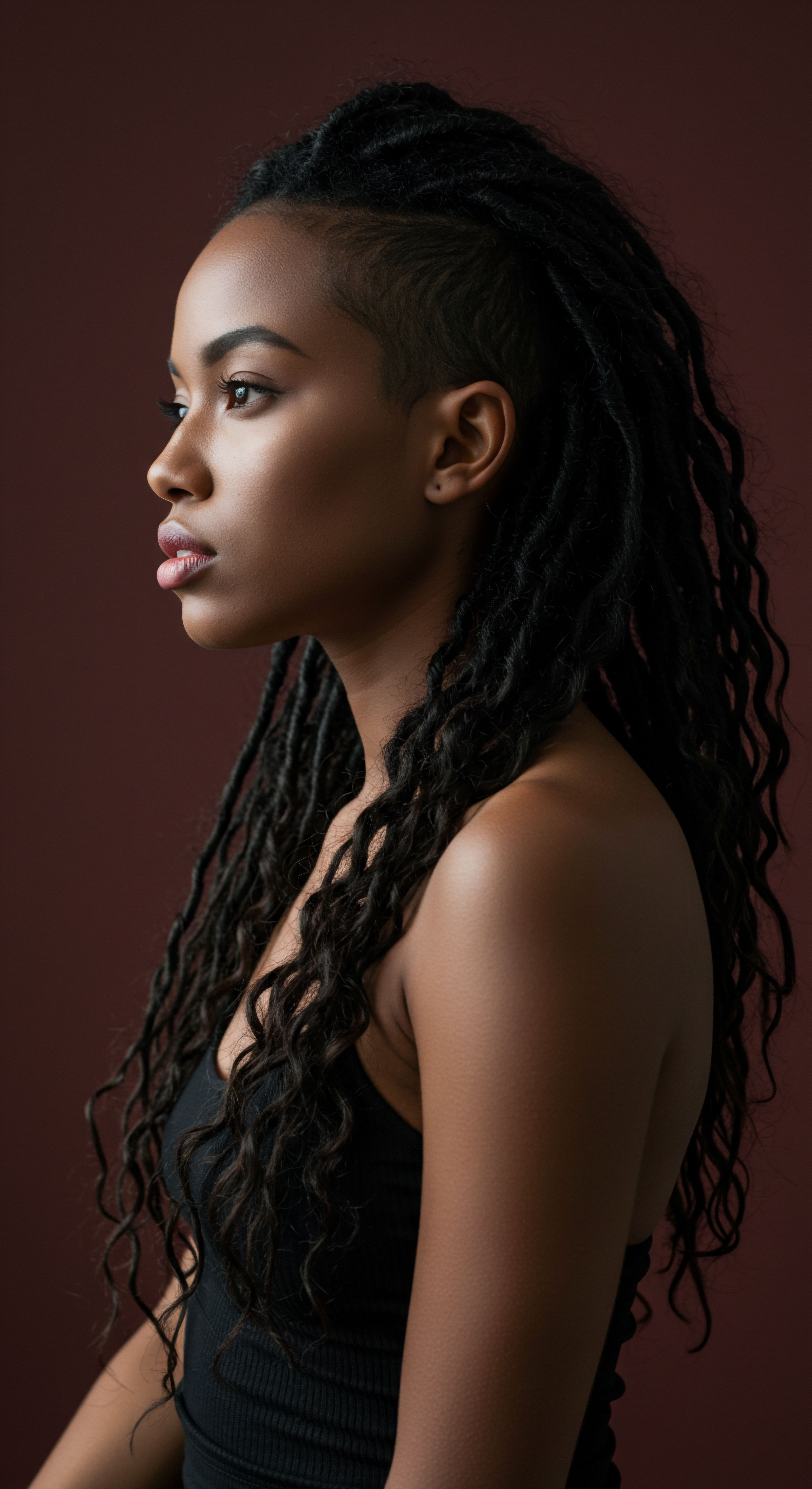
Understanding the Scalp Microbiome in Context
The modern understanding of the Scalp Microbiome has revolutionized our approach to scalp health. This complex community of microorganisms living on the scalp plays a vital role in maintaining its protective barrier and influencing hair growth. An imbalance in this ecosystem can lead to issues like dandruff, irritation, and even hair loss. This scientific revelation provides a sophisticated lens through which to appreciate ancient practices that, perhaps unknowingly, fostered a balanced scalp environment.
For example, traditional herbal rinses and oil applications, often containing antimicrobial or anti-inflammatory compounds, could have helped regulate microbial populations. A study on dandruff management notes that while Malassezia species are well-investigated, bacterial populations like Staphylococcus epidermidis can exacerbate the condition, and traditional herbal therapies with natural active ingredients like Neem and Tea Tree Oil offer a viable substitute to chemical shampoos due to their antifungal and anti-inflammatory qualities. This demonstrates how ancestral knowledge, passed down through generations, effectively managed conditions that we now explain through the lens of microbial ecology.
The careful balance of cleansing without stripping, a principle seen in ancient oil cleansing methods, directly relates to maintaining a healthy scalp microbiome. Harsh modern shampoos, with their high sulfate content, can strip away protective oils, creating an environment where harmful microbes can thrive. This highlights a critical lesson from the past ❉ gentleness and respect for the scalp’s natural equilibrium are paramount.

Cultural Practices and Their Dermatological Implications
The way hair is styled and maintained within cultural contexts also holds significant implications for scalp health. For individuals with textured hair, certain traditional and contemporary styling practices, while culturally significant, can sometimes lead to scalp disorders if not managed with care.
A community-based study conducted in Southwest Nigeria compared women with natural African hair and chemically processed (relaxed) hair. The findings revealed that women with relaxed hair experienced significantly more Flaking of the Scalp, Hair Breakage, and Hair Loss than those with natural hair. This statistical evidence, rooted in real-world data, underscores how styling choices, particularly those involving chemical alteration or excessive tension, can disrupt scalp integrity and lead to adverse outcomes. Similarly, studies on African-American girls have linked hair extensions and infrequent hair oil application to a higher prevalence of seborrheic dermatitis.
This knowledge prompts a nuanced dialogue ❉ how can we honor cultural traditions while also applying modern dermatological understanding to mitigate potential risks? The answer often lies in adapting ancient protective measures, such as intermittent protective styling and gentle cleansing, with contemporary scientific insights into hair structure and scalp physiology.
- Topical Nutrition ❉ Applying beneficial substances directly to the scalp to influence local metabolic processes and hair health, a concept supported by the link between alopecia and diabetes treatments.
- Microbiome Balance ❉ Cultivating a healthy community of microorganisms on the scalp through gentle cleansing and the use of botanical compounds to prevent irritation and support hair growth.
- Protective Styling Adaptations ❉ Modifying traditional styling methods to reduce tension and chemical exposure, particularly for textured hair, to prevent breakage and scalp conditions.
| Ancient Principle Scalp as a living ground for hair |
| Modern Scientific Corroboration Research on the scalp microbiome confirms its role in follicular health and protection against pathogens. |
| Contemporary Application Development of probiotic and prebiotic scalp treatments. |
| Ancient Principle Topical plant remedies for hair loss |
| Modern Scientific Corroboration Ethnobotanical studies linking traditional alopecia plants to diabetes treatments suggest local metabolic effects. |
| Contemporary Application Targeted serums with botanical extracts that influence scalp cellular activity. |
| Ancient Principle Gentle cleansing and conditioning |
| Modern Scientific Corroboration Understanding of scalp pH and acid mantle preservation. |
| Contemporary Application Sulfate-free shampoos and pH-balanced products. |
| Ancient Principle Scalp massage for growth |
| Modern Scientific Corroboration Studies show increased blood flow, dermal papilla cell activation, and hair thickness. |
| Contemporary Application Integration of scalp massagers and massage techniques into daily routines. |
| Ancient Principle This table illustrates the scientific underpinnings of ancient scalp care principles and their relevance in modern practices. |
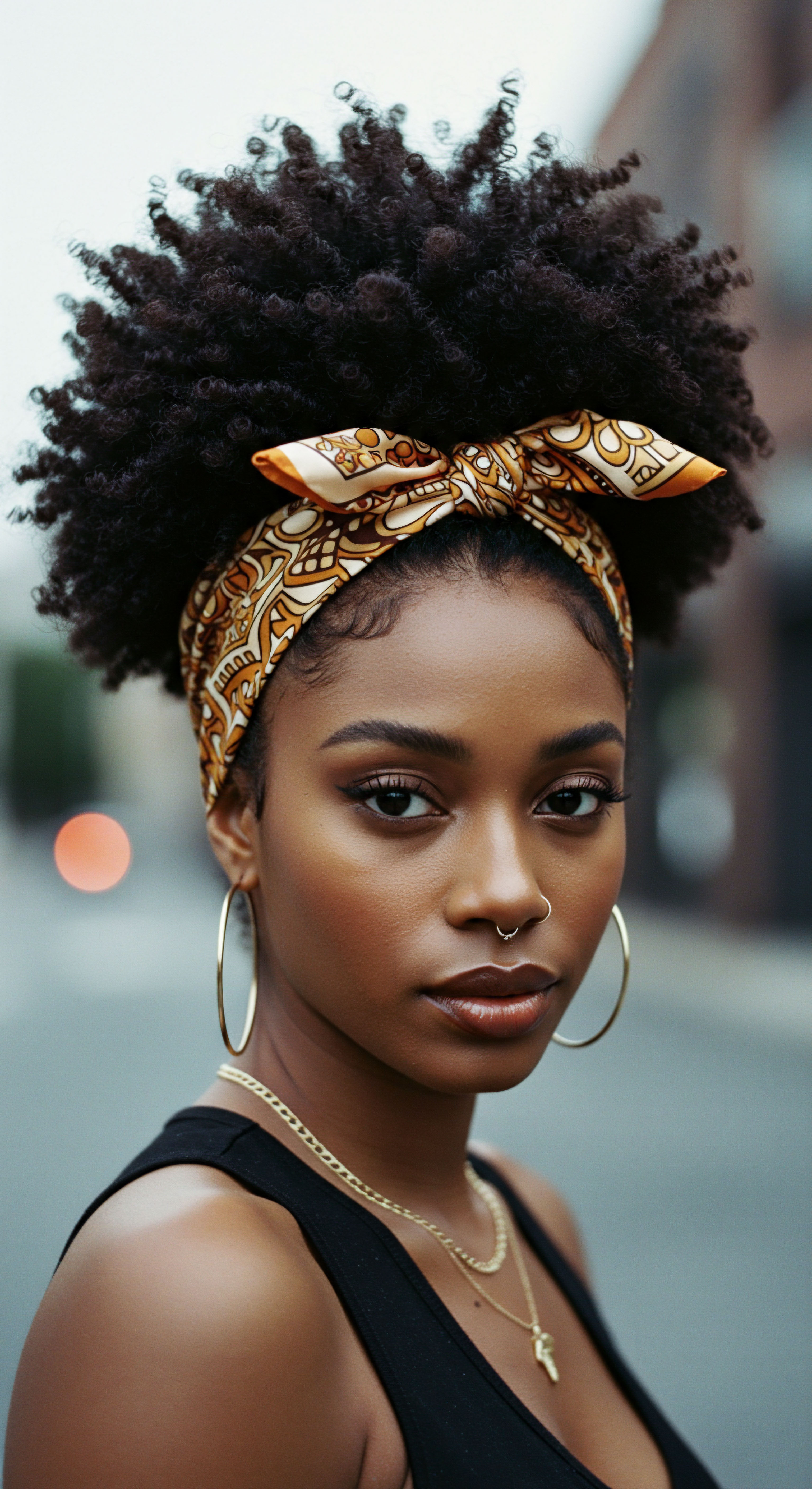
Reflection
The journey from ancient hair care wisdom to modern scalp health practices reveals a continuous, evolving conversation rather than a simple replacement of old with new. It highlights the enduring truth that the health of our hair begins at its very foundation ❉ the scalp. The gentle touch of a grandmother applying oils, the rhythmic motion of a scalp massage, the protective art of a braided style – these are not just historical footnotes.
They are echoes of a deep, intuitive understanding, now amplified and clarified by the precise language of science. As we move forward, perhaps the most profound lesson is to seek the balance between the wisdom of observation and the rigor of research, allowing both to guide us toward truly vibrant, resilient hair.
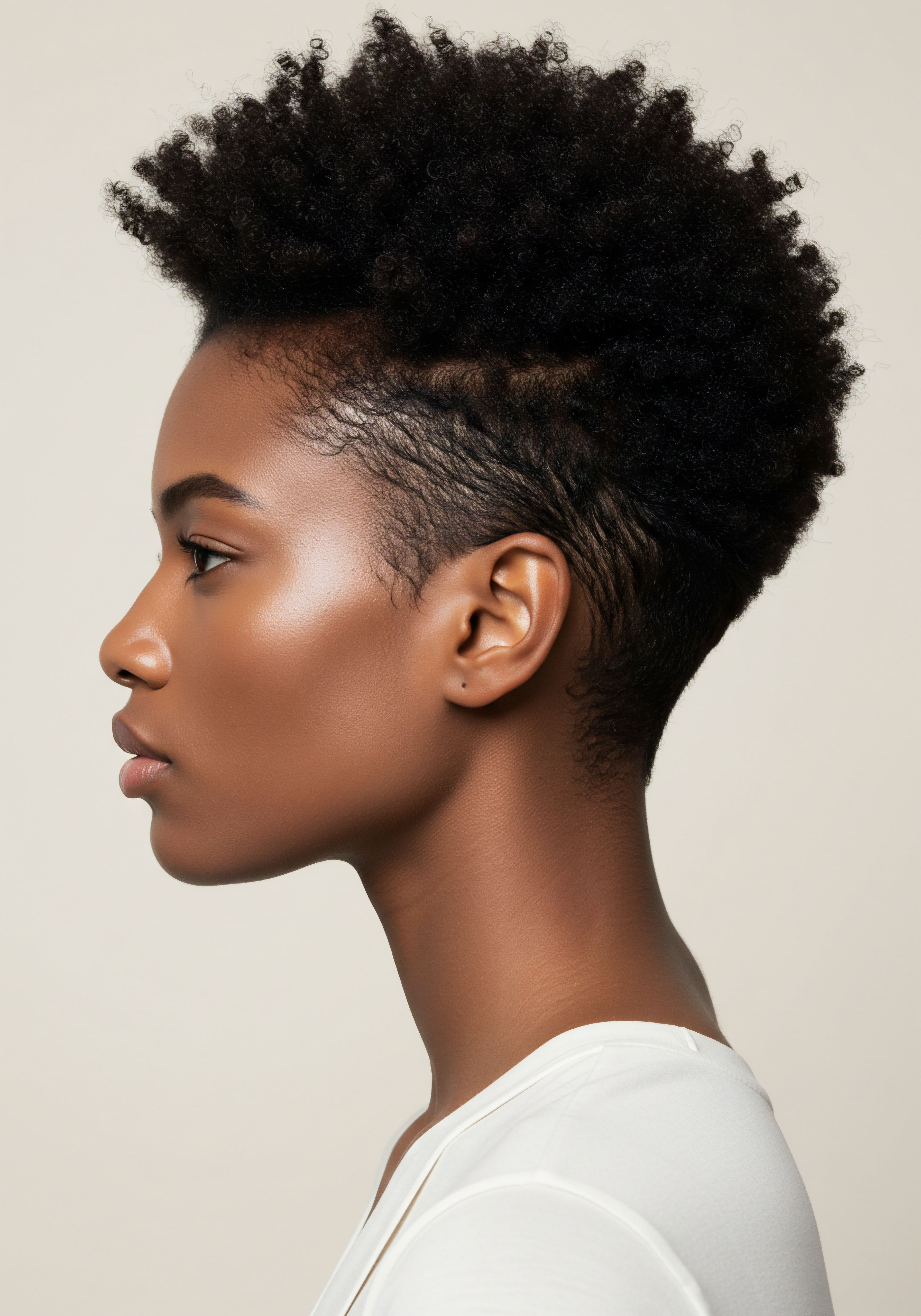
References
- 1. Fabulive. Rediscovering Historical Hair Care Practices. Accessed May 22, 2025.
- 2. Kaboré, K. H. & Konaté, D. Cosmetopoeia of African Plants in Hair Treatment and Care ❉ Topical Nutrition and the Antidiabetic Connection? MDPI. 2021.
- 3. Rolling Out. The Ancient Haircare Secret That’s Backed by Modern Science. 2025 Apr 28.
- 4. Verywell Health. Scalp Massage ❉ Pros and Cons of Head Rubs. 2024 Apr 26.
- 5. Smile Hair Clinic. Can Scalp Massage Actually Help Your Hair Grow? Accessed May 22, 2025.
- 6. The Clifford Clinic. The Effectiveness of Scalp Massage in Combatting Hair Loss. 2024 Jun 10.
- 7. Earth and Skin. Benefits of Massaging The Scalp. 2025 Mar 20.
- 8. Afzal, S. Rashid, A. & Ahmad, I. Cosmetic ethnobotany practiced by tribal women of Kashmir Himalayas. Journal of Medicinal Plants Research. 2013.
- 9. The Mirror. ‘Ancient’ beauty practice using just two ingredients gives ‘amazing’ results. 2025 May 02.
- 10. FullyVital. Scalp Massage for Hair Growth ❉ Scientific Benefits & Proven Results. 2025 Apr 03.
- 11. Jayawardena, B. et al. Cosmetic Ethnobotanical Applications for Hair Care. ResearchGate. 2022.
- 12. Okoro, F. et al. Hairdressing and the prevalence of scalp disease in African adults. ResearchGate. 2024 Nov 21.
- 13. Living History. The Legacy of Lathers ❉ Tracing the Historical Use of Natural Ingredients. 2023 Nov 16.
- 14. Clinikally. The Silent Revolution ❉ How Rice Water Is Transforming Hair Care By Balancing Your Scalp Microbiome. Accessed May 22, 2025.
- 15. Mishra, M. et al. A clinical investigation on the safety and effectiveness of an ayurvedic hair oil in controlling hair fall (khalitya) in healthy adult human subjects ❉ a study on hair fall management. International Journal of Research in Dermatology. 2023 Dec 11.
- 16. Gashee. The Ancient Roots of Chinese Hair Care ❉ Traditions and Techniques. 2024 Apr 19.
- 17. Gashee. Green Tea For Hair Health ❉ How The Ancient Chinese Unlocked The Secret. 2020 Mar 17.
- 18. Zhang, J. Traditional Chinese Medicine in Cosmetics. Cosmetics & Toiletries. 2013 Oct 17.
- 19. Mishra, M. et al. A clinical investigation on the safety and effectiveness of an ayurvedic hair oil in controlling hair fall (khalitya) in healthy adult human subjects. ResearchGate. 2023 Dec 21.
- 20. Clinikally. The Scalp Microbiome ❉ How New Hair Loss Treatments Target Bacterial Imbalance. 2025 May 04.
- 21. Clinikally. Botanical Medicinal Oils for Hair Care and Scalp Health. Accessed May 22, 2025.
- 22. Wright, D. et al. Seborrheic Dermatitis in Skin of Color ❉ Clinical Considerations. Journal of Drugs in Dermatology. 2022.
- 23. Clinikally. Scalp Biomes ❉ Personalized Haircare for Your Unique Flora. 2024 Jun 01.
- 24. Sperling, L. et al. Hair Care Practices in African-American Patients. ResearchGate. 2008.
- 25. FullyVital. The Science Behind Scalp Detox ❉ Enhance Your Hair’s Vitality. 2024 Jan 10.
- 26. Rathore, P. et al. The Role of Microbiome, Sebum and Natural Remedies in Dandruff Management. Journal of Cosmetology & Trichology. 2025 May 15.
- 27. Learn Canyon. Why Botanical Extracts Are Essential For Scalp Care. 2025 Apr 24.
- 28. Park, G. et al. Preclinical and Clinical Studies Demonstrate That the Proprietary Herbal Extract DA-5512 Effectively Stimulates Hair Growth and Promotes Hair Health. PubMed Central. 2017.
- 29. National Institute. The Evolution of Hair & Scalp Treatments ❉ Hair Care History. 2023 Apr 25.
- 30. Ramasamy, M. S. et al. Effectiveness of Dhathri Hair Care and herbal oil against alopecia and seborrheic dermatitis – a clinical study. Journal of Pre-Clinical and Clinical Research. 2023 Feb 01.
- 31. Mouchane, M. et al. Ethnobotanical Survey of Medicinal Plants used in the Treatment and Care of Hair in Karia ba Mohamed (Northern Morocco). Journal of Medicinal Plants and By-Products. 2023.
- 32. Mouchane, M. et al. Ethnobotanical Survey of Medicinal Plants used in the Treatment and Care of Hair in Karia ba Mohamed (Northern Morocco). ResearchGate. 2024 Mar 01.
- 33. Mishra, M. et al. A Safety and Efficacy study of ‘Test Hair Oil’ in Management of Hair Fall (Khalitya) Control in Healthy Adult Human Subjects with Hair Fall (Khalitya). ResearchGate. 2022 Dec 24.
- 34. Henry Ford Health System. Styling practices can lead to serious hair and scalp diseases for African Americans. 2012 Mar 19.
- 35. Lee, C. Y. et al. Natural alternatives from your garden for hair care ❉ Revisiting the benefits of tropical herbs. Molecules. 2022.
- 36. Sequential. Scalp Microbiome. Accessed May 22, 2025.
- 37. Healthline. Essential Oils for Hair Health and Growth. Accessed May 22, 2025.
- 38. Davis, C. et al. Afro-Ethnic Hairstyling Trends, Risks, and Recommendations. MDPI. 2022 Jan 26.
- 39. Omotayo, M. et al. A Community-Based Study of Hair Care Practices, Scalp Disorders and Psychological Effects on Women in a Suburban Town in Southwest Nigeria. ResearchGate. 2023 Jan 24.
- 40. Living History. Golden Locks ❉ Hair Care in the Renaissance Era. 2024 Apr 05.
- 41. Karkare, S. et al. Hair Oils ❉ Indigenous Knowledge Revisited. PMC. 2014.
- 42. Al-Bari, M. A. A. Assessment of Nutraceutical Potential of Herbs for Promoting Hair Growth ❉ Formulation Considerations of Herbal Hair Oil. The Open Dermatology Journal. 2021.
- 43. Rucker Wright, M. et al. Hair care practices and their association with scalp and hair disorders in African American girls. PubMed. 2016.
- 44. Kim, S. et al. Understanding the Characteristics of the Scalp for Developing Scalp Care Products. Journal of Cosmetics, Dermatological Sciences and Applications. 2021.